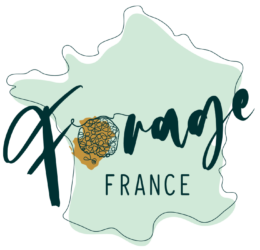A Short introduction to different types of bees, wasps and flies that are pretending to be bees or wasps.
Carpenter Bee
Tough Acting harmless bee, The common name “carpenter bee” derives from their nesting behavior; nearly all species burrow into hard plant material such as dead wood or bamboo. Many species in this enormous family (genus) are difficult to tell apart. Most are all black, or primarily black with some yellow or white pubescence (the soft downy hair on insects and animals). Some differ only in subtle morphological features, such as details of the male genitalia. So, unless you have a microscope to look at bee penises then you can just call them a carpenter bee. (Below Eastern Carpenter & Violet Carpenter Bee).


Honey Bee
While about 20,000 species of bees exist, only eight species of honey bee are recognized, with a total of 43 subspecies.

Worker bees are the most familiar-looking member of the honeybee hive, as they make up about 99% of each colony’s population.
Worker bees are all female, and they do almost everything for the hive. From birth to her death 45 days later, the worker bee is given different tasks to do during different stages of her life. Worker bees are responsible for everything from feeding the larvae (the baby bees), to tending to the queen, to cleaning the hive, to collecting food, to guarding the colony, to building honeycomb.
Paper Wasp

Paper wasps are vespid wasps that gather fibers from dead wood and plant stems, which they mix with saliva, and use to construct nests made of gray or brown papery material. Some types of paper wasps are also sometimes called umbrella wasps, due to the distinctive design of their nests Will only sting if provoked but is extremely painful.
Bumblebee

The sad fact is that i googled images for bumblebees and the first 100 or so images were of the transformers car “bumblebee” Moving on from that disgrace the bumblebee is so large it should not fly and a species of bee that most of us are able to identify from this fact. A bumblebee (or bumble bee, bumble-bee, or humble-bee is any of over 250 species in the genus Bombus, part of Apidae, one of the bee families.
The word “bumblebee” is a compound of “bumble” + “bee”—”bumble” meaning to hum, buzz, drone, or move ineptly or flounderingly. The generic name Bombus, assigned by Pierre André Latreille in 1802, is derived from the Latin word for a buzzing or humming sound, borrowed from Ancient Greek βόμβος (bómbos).
Hover Fly
A true fly. The size of hoverflies varies depending on the species. Some are small, elongated, and slender, while others, are large, hairy, and yellow and black. As members of the Diptera, all hoverflies have a single functional pair of wings. Due to their colourings they are often mistaken for wasps or bees. Despite this, hoverflies are harmless to humans.
Hoverflies can be distinguished in the field by anatomical features such as:
- The legs and mouthparts of hoverflies are usually not particularly long and thin.
- Their facial cuticle often has prominent bulges and/or beak- to knob-like projections (most bee flies have an evenly curved or sloping face).
- The wings are often clear or have smooth gradients of tinting.
- Their abdomens and thoraces often have glossy cuticular body surfaces, abdominal colors are usually mainly due to cuticular pigments (bee flies are usually very hairy)
(Below Bee fly & Hoverfly)


Yellow Jacket

Not much to say about these guys, we are all familiar with, perhaps too familiar with the common wasp. Interestingly the diet of the adult yellowjacket consists primarily of fruits, flower nectar, and tree sap. The larvae feed on proteins derived from insects, meats, and fish. Workers collect, chew, and condition such foods before feeding them to the larvae. Larvae, in return, secrete a sugary substance for workers to eat. As insect sources of food diminish in late summer, larvae produce less for workers to eat. Foraging workers will then pursue sources of sugar outside the nest including ripe fruits and human garbage.
Many of the insects collected for protein by the workers are considered pest species, making the yellow jacket beneficial to agriculture.
Mud Dauber
Mud dauber, “mud wasp” or “dirt dauber” is a name commonly applied to this family of wasps that build their nests from mud.
The organ pipe mud dauber builds nests in the shape of a cylindrical tube resembling an organ pipe. Common sites include vertical or horizontal faces of walls, cliffs, bridges, overhangs and shelter caves or other structures.
The nest of the black and yellow mud dauber is a simple, one-cell, cigar-shaped nest that is attached to crevices, cracks and corners. Each nest contains one egg. Usually several nests are clumped together and covered in mud. (below mud dauber & nest)









